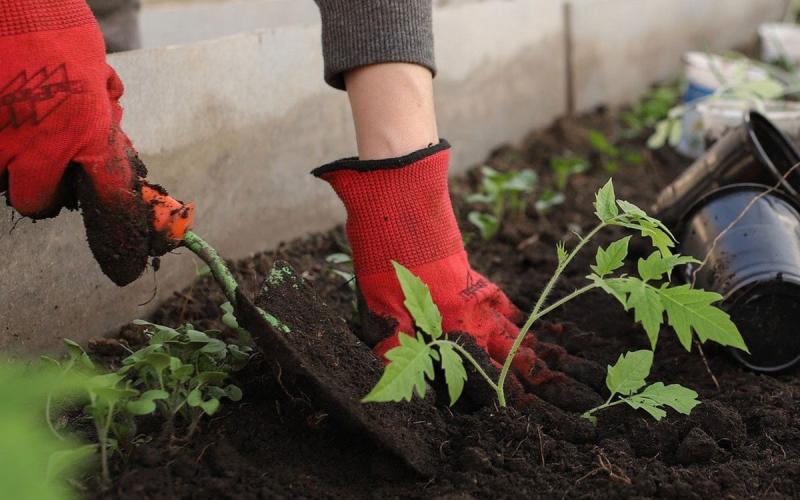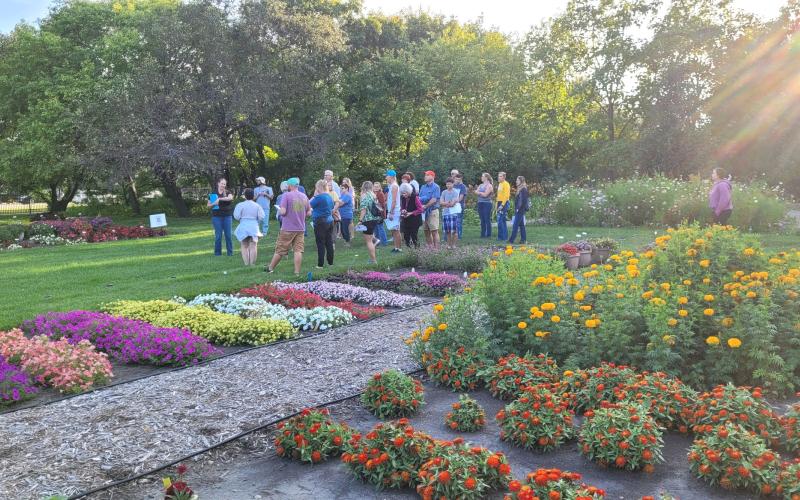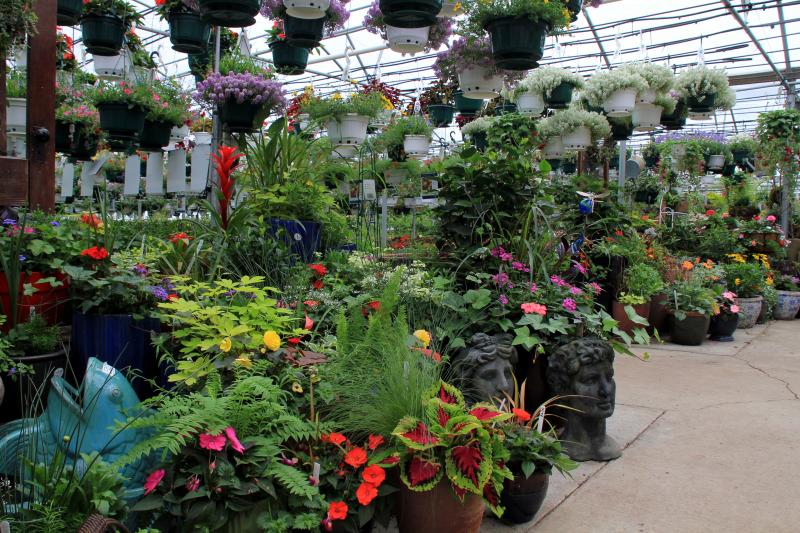
I encounter many gardeners at McCrory Gardens and often they are older folks that perhaps used to farm or live out in the country where they had lots of room for gardens of all kinds. Now they are looking to continue gardening but just don’t have the space or the ability to garden like they used to. Container gardens can be a great way to continue gardening or expand the way you are gardening and add color to your landscape, no matter what the size. You can even add edibles to your container so that you can have your pot and eat it too! There are many ornamental edibles like kale, mustard, Swiss chard and even peppers and tomatoes that are quite pretty when loaded with fruit.
Container Selection
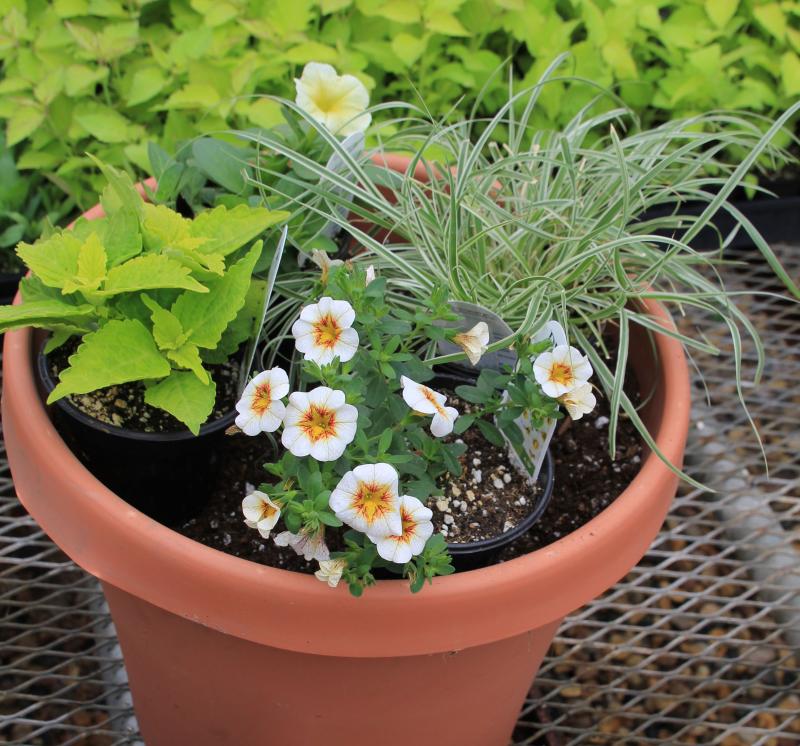
Containers come in all shapes and sizes. Smaller containers are easy to move around and look good when grouped together but you will be limited in the number of plants you can fit in each one and you will have to water more frequently. Larger containers give more flexibility in the kinds of plants you choose, can go for longer periods without watering but can be very heavy to move around. Some containers are like the old style terra cotta pots, very porous, while others may be glazed or plastic, which will help to keep the potting soil moist longer too. Containers also come in a variety of shapes from the standard to the shapes of animals, decorative to outrageous. Use your own taste to select the containers that you like and that will fit into your own personal landscape.
Always make sure that whichever container you choose it has good drainage holes in the bottom. Sometimes you will see where the holes could be but they still need to be opened up by chipping out some of the hole or a rubber plug removed. It is important that you always water your plants thoroughly but yet allow excess water to drain out the bottom of the pot. I have seen many cases of plants dying because of a lack of water, despite the owner telling me that they were good about watering their plants. You want to apply enough water so that the excess drains out of the bottom of the pot. Wait for the plant to start to get dry, then water thoroughly again. Stick your finger into the soil to feel if it is dry or watch your plants carefully for signs of wilting. But don’t let them wilt too much or they may not come back.
Soil Perparation
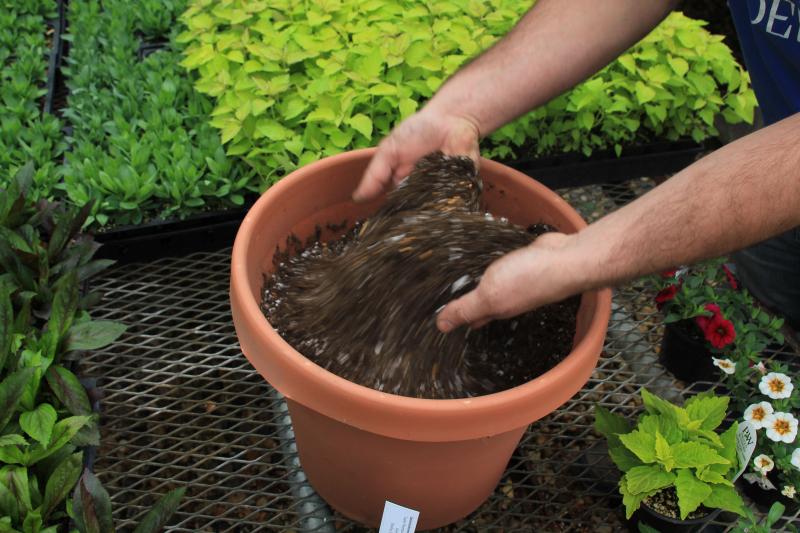
Whenever you are growing in containers it is a good idea to use a potting soil, not garden soil. Garden soil is usually going to be too heavy, and too poorly drained to work in a container. It may also contain weed seeds, harmful fungi, bacteria, insects or other critters that you really don’t want in the roots of your plants. Potting soil can be purchased at just about any garden center or discount outlet store. There are many different types to choose from. Years ago, many of these contained actual soil. Now most of them contain mostly peat moss and other components. They also usually contain some fertilizer but in most cases, that will not be enough to sustain your plants’ needs throughout the growing season. You can either plan on watering your plants periodically with some water soluble plant fertilizer or you can mix in some slow-release fertilizer before you plant. You can also sprinkle it on top after planting but it is better to incorporate it into the potting soil so it is down where the plant roots are. Check the label instructions to find out how much to use for your container size. Also check the potting soil to see if it is a little moist. If it got too dried out in the bag, it can be very difficult to “wet” again. So, if it seems dry, add some warm water and mix it up to help get it moistened before planting.
Thrillers, Fillers & Spillers

Now that you have your container and the potting soil ready to go, it is time to select your plants. The basic recipe for a container is that you need a “thriller”, a “filler” and a “spiller”. I remember working in a greenhouse while I was in High School. The standard container was a red geranium, a white dusty miller, some vinca vine and a spike. This made for a pretty container, especially for Memorial Day but now most containers are a lot more dramatic than those old standard plant combinations with the greatly expanded plant palette that is now available.
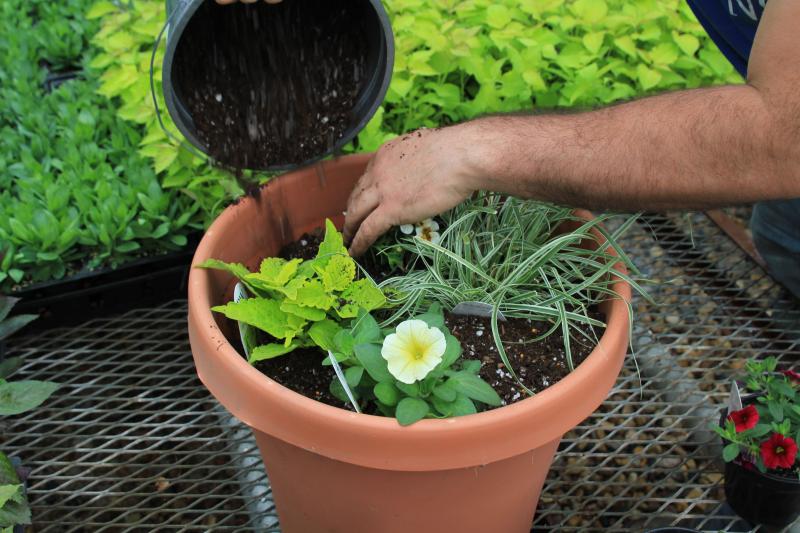
A thriller is a plant that really catches your eye, has dramatic foliage, flowers, texture of all of the above. It might be tall or short but it should probably be the first thing you see when you look at your finished container. Think of it as your focal point. There are many different kinds of plants that could be the thriller in your container. What you choose will depend on the size, shape and color of your container, and of course what catches your attention at the garden center. Consider a Coleus, Caladium, Colocasia, Gerbera, Hibiscus or other flower as your thriller. Next you want a plant to fill in the bulk of the space in the container - your filler. Usually this is a plant that has an upright or mounding growth habit like a Petunia, Geranium or Vinca but again, there are many plants to choose from. Finally you need a spiller to finish off the appearance of your container. A spiller is a plant that will grow down over the edge of the container. This will help to make the plants look more connected to the container, instead of just being stuck into the top of it. Some classic spillers include Calibrachoa, Sweet Alyssum, Scaveola and Vinca Vine but there are some fun new things like Fiber Optic Grass and many others.
Watering

When you are done planting, water thoroughly and enjoy! Containers can be placed just about anywhere but having them somewhere near a source of water is helpful because they will often need to be watered every day or two. Place them where you want to add interest, attract attention or just add a bit of a thrill to your landscape.
